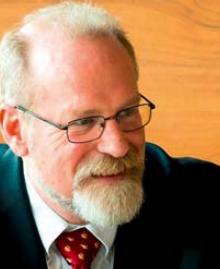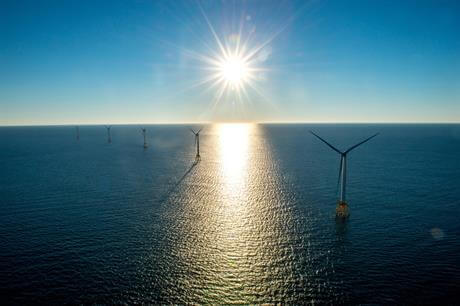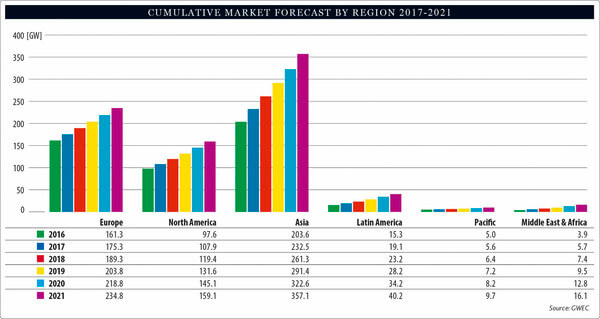News Release from windfair.net
Wind Industry Profile of
Wind Energy Is Not Enough – Europe Needs To Find Broader Solutions For Energy Transition
Let's start with some good news: there are wind energy projects in more than 90 countries, including nine with more than 10,000 MW installed, and 29 which passed the 1,000 MW mark last year. Cumulative capacity grew by 12.6% to reach a total of 486.8 GW, as GWEC states.
 “Wind power is now successfully competing with heavily subsidized incumbents across the globe, building new industries, creating hundreds of thousands of jobs and leading the way towards a clean energy future” said GWEC Secretary General Steve Sawyer (pictured right, image by GWEC). “We are well into a period of disruptive change, moving away from power systems centered on a few large, polluting plants towards markets increasingly dominated by a range of widely distributed renewable energy sources. We need to get to a zero emissions power system well before 2050 if we are to meet our climate change and development goals.”
“Wind power is now successfully competing with heavily subsidized incumbents across the globe, building new industries, creating hundreds of thousands of jobs and leading the way towards a clean energy future” said GWEC Secretary General Steve Sawyer (pictured right, image by GWEC). “We are well into a period of disruptive change, moving away from power systems centered on a few large, polluting plants towards markets increasingly dominated by a range of widely distributed renewable energy sources. We need to get to a zero emissions power system well before 2050 if we are to meet our climate change and development goals.”
This is precisely the problem: more and more countries are in danger of missing their set targets for climate protection and expansion of renewable energies. In addition to the uncertainty as to whether the United States under Donald Trump are still upholding their commitment to the Paris Climate Agreement, other nations which have hitherto been strong forces of the energy transition now also fail. Among them is one-time flagship and pioneer Germany, according to a recent study by the German Renewable Energy Federation (BEE). According to the study (available only in German), the share of renewable energies is currently at 14.6% and at the current expansion rate the country will only reach 16.7% in 2020. However, binding EU target by that year is an 18% share in the overall energy mix. In addition to its climate protection targets, Germany now also misses its renewable energy target for 2020.
The current economic situation in the German market also doesn't look too good, points out the Association of German Machinery and Plant Manufacturers (VDMA). Only market with a positive outlook at the moment is onshore wind. Faltering in their home markets are thermal power plants over 100 MW and hydropower plants, including pumped storage facilities. It's obvious that the different parts of the industry are not working enough for each others benefits. This has to change to make the energy transition move forward significantly.
Meanwhile, for offshore wind energy, the provisions of the new EEG have caused considerable uncertainty among manufacturers and investors – despite the recent tender where some of the winners will build the first German offshore farms without any subsidies. Matthias Zelinger, Managing Director of VDMA Power Systems, explains the problem: “On the one hand, there are pulling effects with onshore wind energy and engine systems because of the switchover to the tender system. On the other hand, there is the existing, non-future proof overcapacity in the power plant fleet and a massive uncertainty among investors.”
However, the calls for tenders, including the renouncement of subsidies, also set a clear signal, for the offshore wind technology has not yet reached the end of all innovation. Countries such as Belgium, where the government voices thoughts about switching to a tender system like in Germany, or the Netherlands will also bring costs down significantly.

Offshore wind energy: Soon to be free of subsidies everywhere? (Picture: GWEC)
Also Denmark, clearly leading the GWEC ranking with a wind power share of 40%, thinks the end for subsidies is near. Danish energy minister, Lars Christian Lilleholt, recently told Bloomberg that “in just a few years,” renewable energy providers won’t need state support anymore. He says it’s a development he couldn’t have imagined as recently as last year. “We’re now very close to arriving,” he said in an interview in Copenhagen on Monday.
On the other hand, experts also warn not to put too much hope in further technological advances. Technical progress is a first, indeed very important step, but Europe is already over it. Instead, the transport and heating sectors will also have to change significantly: “Policy makers must consider energy much more as an overall system of conversion, storage and consumption across all energy sources. The power transition must turn into an energy transition in all areas where all technology and flexibility options are in fair competition with each other,” explains Matthias Zelinger. “If we want to keep our role as technological leaders, we have to build state-of-the-art wind power systems, future-oriented gas power plants or storage such as Power-to-X in our domestic market. This will also create a considerable potential for export.”

Growth will be led by Asia (Image: GWEC)
This is far from true in other countries at the moment. Currently, the most popular wind turbine markets are Vietnam and Argentina, as well as Uruguay and Chile, where companies are currently concentrating nearly exclusively on capacity expansion. The two Asian ‘power houses’ China and India are also mainly driving up their installations. Their only other aspect for consideration at the moment is a slow grid expansion. But in the future, these countries will also have to deal with the question, how to boost energy transition in other sectors as well.
If Europe succeeds in finding solutions to these problems, the problem of climate change may also be mitigated in time, as Sawyer made clear: “Overall, we have a lot of confidence in the wind power market going forward, as the technology continues to improve, prices continue to go down and the call for clean, renewable power to reduce emissions, clean our air and create new jobs and new industries only gets stronger with each passing year”.
- Author:
- Katrin Radtke
- Email:
- press@windfair.net
- Keywords:
- GWEC, VDMA, BEE, study, energy transition, climate change





















